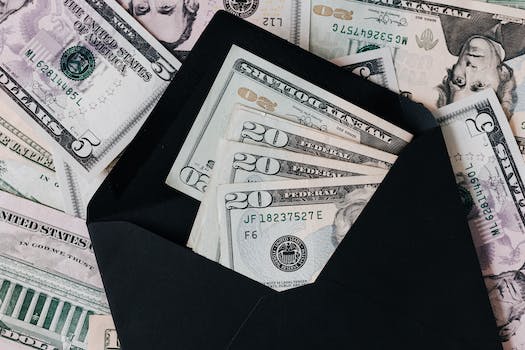How To Save Money Life Hacks
Introduction


Introduction: Saving money is an essential aspect of financial stability and security. However, it can be challenging to save money, especially when you have bills to pay and other financial obligations. Fortunately, there are several life hacks that you can use to save money and achieve your financial goals. In this article, we will explore some of the best ways to save money and improve your financial situation.
10 Simple Ways to Cut Your Monthly Expenses
Saving money is a goal that many people have, but it can be difficult to know where to start. Fortunately, there are many simple ways to cut your monthly expenses and start saving money today. Here are 10 life hacks that can help you save money and live more frugally.
1. Make a budget
The first step to saving money is to know where your money is going. Make a budget that includes all of your monthly expenses, such as rent, utilities, groceries, and entertainment. Once you know how much you are spending, you can look for areas where you can cut back.
2. Cut back on eating out
Eating out can be expensive, especially if you do it frequently. Try cooking at home more often and packing your lunch for work. Not only will you save money, but you will also eat healthier.
3. Cancel subscriptions you don’t use
Do you have a gym membership that you never use? Or a magazine subscription that you never read? Canceling subscriptions that you don’t use can save you a lot of money each month.
4. Use coupons and promo codes
Before making a purchase, look for coupons and promo codes online. Many retailers offer discounts that can save you money on everything from groceries to clothing.
5. Buy generic brands
Generic brands are often just as good as name-brand products, but they are usually much cheaper. Try buying generic brands for groceries, cleaning supplies, and other household items.
6. Use public transportation
If you live in a city with good public transportation, consider using it instead of driving. Not only will you save money on gas and parking, but you will also reduce your carbon footprint.
7. Shop at thrift stores
Thrift stores are a great place to find gently used clothing, furniture, and other household items at a fraction of the cost of buying new. You can also sell your own items at thrift stores to make some extra cash.
8. Cut back on energy usage
Reducing your energy usage can save you money on your monthly utility bills. Try turning off lights when you leave a room, using a programmable thermostat, and unplugging electronics when they are not in use.
9. Use cash instead of credit cards
Using cash instead of credit cards can help you avoid overspending and accumulating debt. Try withdrawing a set amount of cash each week and using it for your daily expenses.
10. Negotiate bills
Many companies are willing to negotiate bills if you ask. Call your cable, internet, and phone providers and ask if they can offer you a better deal. You may be surprised at how much you can save.
In conclusion, there are many simple ways to cut your monthly expenses and start saving money today. By making a budget, cutting back on eating out, canceling subscriptions you don’t use, using coupons and promo codes, buying generic brands, using public transportation, shopping at thrift stores, cutting back on energy usage, using cash instead of credit cards, and negotiating bills, you can save money and live more frugally. Try implementing these life hacks today and see how much you can save.
The Ultimate Guide to Couponing for Beginners
Are you tired of spending too much money on groceries and household items? Do you want to learn how to save money without sacrificing quality? Couponing may be the solution you’ve been looking for. In this ultimate guide to couponing for beginners, we’ll cover everything you need to know to start saving money today.
First, let’s define what couponing is. Couponing is the practice of using coupons to save money on purchases. Coupons can be found in newspapers, magazines, online, and in-store. They offer discounts on specific products or a percentage off your total purchase.
The first step to successful couponing is to gather coupons. Start by checking your local newspaper for coupon inserts. You can also find coupons online by visiting manufacturer websites, coupon websites, and social media pages. Some stores even offer their own coupons, so be sure to check their websites or sign up for their loyalty programs.
Once you have your coupons, it’s important to organize them. You can use a binder, a coupon wallet, or even a simple envelope system. Organize your coupons by category, such as food, household items, and personal care products. This will make it easier to find the coupons you need when you’re shopping.
Next, it’s time to plan your shopping trip. Look at the weekly ads for your favorite stores and see what items are on sale. Match up your coupons with the sale items to maximize your savings. Some stores even offer double or triple coupon days, so be sure to take advantage of those opportunities.
When you’re at the store, be sure to read the fine print on your coupons. Some coupons have restrictions, such as a minimum purchase requirement or an expiration date. Make sure you’re using your coupons correctly to avoid any issues at the checkout.
Another way to save money is to stack coupons. This means using a manufacturer coupon and a store coupon on the same item. Some stores even allow you to stack multiple coupons on one item, so be sure to check their policies.
If you’re new to couponing, it can be overwhelming at first. Start small and focus on a few items at a time. As you become more comfortable with the process, you can start to expand your couponing efforts.
In addition to traditional coupons, there are other ways to save money on your purchases. Many stores offer digital coupons that can be loaded onto your loyalty card. You can also use cashback apps, such as Ibotta and Checkout 51, to earn money back on your purchases.
Finally, don’t forget to take advantage of store loyalty programs. Many stores offer rewards for frequent shoppers, such as discounts on future purchases or free items. Sign up for these programs and take advantage of the rewards to save even more money.
In conclusion, couponing is a great way to save money on your purchases. By gathering coupons, organizing them, and planning your shopping trips, you can maximize your savings. Don’t forget to read the fine print on your coupons, stack coupons, and take advantage of other money-saving opportunities. With a little effort, you can become a couponing pro and save money on all of your purchases.
5 DIY Home Improvement Projects That Save You Money
Are you looking for ways to save money on home improvement projects? Look no further! Here are five DIY home improvement projects that can save you money.
1. Paint Your Walls
One of the easiest and most cost-effective ways to update your home is by painting your walls. A fresh coat of paint can transform a room and make it look brand new. Plus, painting your walls yourself can save you hundreds of dollars in labor costs. Just be sure to properly prep your walls before painting to ensure a smooth finish.
2. Install a Programmable Thermostat
Installing a programmable thermostat can save you money on your energy bills by automatically adjusting the temperature in your home based on your schedule. You can set it to lower the temperature when you’re away from home or asleep, and raise it when you’re back. This can result in significant savings on your energy bills over time.
3. Replace Your Light Fixtures
Replacing outdated light fixtures can instantly update the look of your home. And, if you choose energy-efficient LED bulbs, you can save money on your energy bills as well. Plus, replacing light fixtures is a relatively easy DIY project that can be completed in just a few hours.
4. Refinish Your Cabinets
If your kitchen cabinets are looking worn or outdated, consider refinishing them instead of replacing them. Refinishing your cabinets can give them a fresh new look without the high cost of replacement. Plus, it’s a DIY project that can be completed over a weekend.
5. Install a Water Filtration System
Installing a water filtration system can save you money on bottled water and reduce the amount of plastic waste in your home. Plus, it can improve the taste and quality of your tap water. While a professional installation can be costly, there are many DIY options available that can save you money.
In conclusion, there are many DIY home improvement projects that can save you money. From painting your walls to installing a water filtration system, these projects can update the look of your home and save you money on energy bills and bottled water. So, why not give them a try? Your wallet (and your home) will thank you.
How to Meal Plan and Save Money on Groceries
Are you tired of overspending on groceries every month? Do you want to save money but don’t know where to start? Well, look no further! In this article, we will discuss some life hacks on how to meal plan and save money on groceries.
Firstly, it’s important to plan your meals for the week ahead. This will not only save you time but also money. Start by making a list of the meals you want to cook for the week and the ingredients you will need. This will help you avoid buying unnecessary items and reduce food waste.
Next, take advantage of sales and discounts. Check your local grocery store’s weekly ads and plan your meals around the items that are on sale. You can also use coupons to save even more money. However, be careful not to buy items just because they are on sale if you don’t need them.
Another great way to save money on groceries is to buy in bulk. This is especially useful for non-perishable items such as rice, pasta, and canned goods. Buying in bulk can save you money in the long run and reduce the number of trips you need to make to the grocery store.
When shopping for fresh produce, try to buy seasonal fruits and vegetables. These items are usually cheaper and taste better since they are in season. You can also buy frozen fruits and vegetables, which are often cheaper than fresh and can be stored for longer periods.
Meal prepping is another great way to save money on groceries. By preparing your meals in advance, you can avoid buying expensive takeout or eating out. You can also save time during the week by having your meals ready to go.
If you have a garden or access to fresh produce, consider growing your own fruits and vegetables. This can save you money and provide you with fresh, organic produce. You can also freeze or can any excess produce to use later in the year.
Lastly, don’t be afraid to try new recipes and experiment with different ingredients. This can help you save money by using what you already have in your pantry and reducing the need to buy new ingredients. You can also find inspiration from online recipe websites or cookbooks.
In conclusion, meal planning and saving money on groceries can be easy with a little bit of effort and planning. By following these life hacks, you can save money, reduce food waste, and eat healthier. Remember to plan your meals, take advantage of sales and discounts, buy in bulk, choose seasonal produce, meal prep, grow your own produce, and experiment with new recipes. Happy saving!
The Benefits of Buying Used vs. New
Saving money is a goal that many people strive for, but it can be difficult to achieve. Fortunately, there are many life hacks that can help you save money without sacrificing your quality of life. One of the most effective ways to save money is by buying used items instead of new ones. In this article, we will explore the benefits of buying used vs. new and provide some tips for finding great deals on pre-owned items.
The first and most obvious benefit of buying used items is that they are typically much cheaper than new ones. Whether you are shopping for clothing, furniture, electronics, or anything else, you can often find high-quality used items for a fraction of the cost of new ones. This is especially true for items that are in good condition but have been gently used. By buying used, you can save hundreds or even thousands of dollars over time.
Another benefit of buying used items is that it is better for the environment. When you buy new items, you are contributing to the demand for new products, which in turn leads to more resources being used and more waste being generated. By buying used, you are reducing your carbon footprint and helping to conserve natural resources. Additionally, many used items are made from materials that are more durable and long-lasting than newer items, which means that they will last longer and require fewer replacements over time.
Buying used items can also be a great way to find unique and one-of-a-kind items that you might not be able to find anywhere else. Whether you are looking for vintage clothing, antique furniture, or rare collectibles, buying used can be a great way to discover hidden gems that you might not have found otherwise. This can be especially rewarding if you are a collector or someone who enjoys unique and unusual items.
Of course, there are some downsides to buying used items as well. One of the biggest concerns is that you might end up with an item that is damaged or in poor condition. However, this can usually be avoided by carefully inspecting the item before you buy it and asking the seller about any known issues. Additionally, many sellers offer warranties or return policies that can help protect you in case you are not satisfied with your purchase.
If you are interested in buying used items, there are many ways to find great deals. One of the best places to start is by checking out online marketplaces like eBay, Craigslist, and Facebook Marketplace. These sites allow you to search for specific items and compare prices from multiple sellers. You can also check out local thrift stores, consignment shops, and garage sales to find great deals on used items in your area.
In conclusion, buying used items can be a great way to save money, reduce your environmental impact, and find unique and one-of-a-kind items. While there are some risks involved, these can usually be mitigated by careful inspection and research. By taking advantage of the many resources available for finding used items, you can save money and enjoy all the benefits of buying pre-owned. So why not give it a try and see how much you can save?
7 Creative Ways to Make Money on the Side
Saving money is a crucial aspect of financial stability. However, it can be challenging to save money when you have bills to pay and other expenses to take care of. Fortunately, there are several creative ways to make money on the side that can help you save more money. In this article, we will explore seven life hacks that can help you make extra cash.
1. Sell Your Unwanted Items
One of the easiest ways to make money on the side is by selling your unwanted items. You can sell items such as clothes, electronics, and furniture on online marketplaces like eBay, Craigslist, or Facebook Marketplace. You can also sell your items at a garage sale or a flea market. Selling your unwanted items not only helps you make extra cash but also declutters your home.
2. Participate in Online Surveys
Another way to make money on the side is by participating in online surveys. Many companies pay people to take surveys to gather information about their products or services. You can sign up for survey websites like Swagbucks, Survey Junkie, or Vindale Research to start earning money. Although you won’t make a lot of money from taking surveys, it’s an easy way to earn some extra cash.
3. Rent Out Your Space
If you have a spare room or a parking space, you can rent it out to make extra cash. You can list your space on websites like Airbnb, VRBO, or HomeAway. Renting out your space can be a great way to make money, especially if you live in a popular tourist destination.
4. Freelance Your Skills
If you have a skill like writing, graphic design, or web development, you can freelance your skills to make extra cash. You can find freelance work on websites like Upwork, Fiverr, or Freelancer. Freelancing your skills not only helps you make extra cash but also allows you to work on your own terms.
5. Sell Your Crafts
If you’re crafty, you can sell your crafts to make extra cash. You can sell your crafts on websites like Etsy or at local craft fairs. Selling your crafts not only helps you make extra cash but also allows you to showcase your creativity.
6. Rent Out Your Car
If you have a car that you don’t use often, you can rent it out to make extra cash. You can list your car on websites like Turo or Getaround. Renting out your car can be a great way to make money, especially if you live in a busy city.
7. Pet Sitting
If you love pets, you can make extra cash by pet sitting. You can offer your services on websites like Rover or Care.com. Pet sitting not only helps you make extra cash but also allows you to spend time with furry friends.
In conclusion, there are several creative ways to make money on the side. Whether you’re selling your unwanted items, participating in online surveys, or freelancing your skills, there are plenty of opportunities to make extra cash. By implementing these life hacks, you can save more money and achieve financial stability.
The Importance of Building an Emergency Fund and How to Do It
Saving money can be a daunting task, especially when you have bills to pay and a limited income. However, building an emergency fund is crucial to your financial stability. An emergency fund is a sum of money set aside for unexpected expenses, such as medical bills, car repairs, or job loss. Without an emergency fund, you may find yourself in debt or struggling to make ends meet. In this article, we will discuss the importance of building an emergency fund and how to do it.
Why is an emergency fund important?
Life is unpredictable, and unexpected expenses can arise at any time. Without an emergency fund, you may have to rely on credit cards or loans to cover these expenses. This can lead to high-interest rates and debt that can take years to pay off. An emergency fund provides a safety net that can help you avoid financial hardship and stress.
How much should you save?
The amount you should save in your emergency fund depends on your individual circumstances. Financial experts recommend saving three to six months’ worth of living expenses. This includes rent or mortgage payments, utilities, food, transportation, and any other necessary expenses. If you have dependents or a high-risk job, you may want to save more.
How to build an emergency fund
Building an emergency fund takes time and discipline, but it is worth the effort. Here are some tips to help you get started:
1. Set a savings goal: Determine how much you want to save and set a deadline for achieving your goal. This will help you stay motivated and focused.
2. Create a budget: Review your monthly expenses and identify areas where you can cut back. This may include eating out less, canceling subscriptions, or reducing your utility bills.
3. Automate your savings: Set up automatic transfers from your checking account to your emergency fund. This will ensure that you are consistently saving money without having to think about it.
4. Use windfalls wisely: If you receive a bonus, tax refund, or other unexpected income, consider putting it towards your emergency fund.
5. Avoid dipping into your emergency fund: Your emergency fund should only be used for true emergencies. Avoid using it for non-essential expenses, such as vacations or shopping sprees.
6. Re-evaluate your savings regularly: As your expenses and income change, you may need to adjust your savings goals. Review your emergency fund regularly and make changes as needed.
In conclusion, building an emergency fund is an essential part of financial planning. It provides a safety net that can help you avoid debt and financial stress. By setting a savings goal, creating a budget, automating your savings, and avoiding unnecessary expenses, you can build an emergency fund that will give you peace of mind. Remember, it’s never too late to start saving, so start today and watch your emergency fund grow.
Conclusion
Conclusion: Saving money is an important aspect of financial stability and security. By implementing simple life hacks such as creating a budget, reducing unnecessary expenses, and finding ways to increase income, individuals can save money and achieve their financial goals. It is important to prioritize saving and make it a habit in order to build a strong financial foundation for the future.





